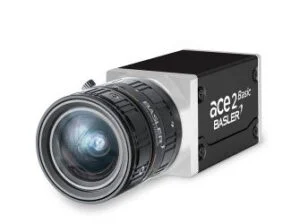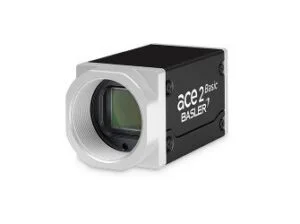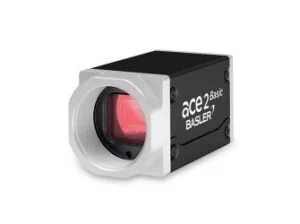Machine Vision Camera
Inside the Lens
The Role of Machine Vision Cameras in Optical Sensor Technology and Industrial Vision Solutions
Machine vision cameras are essential in optical sensor technology and industrial vision solutions, significantly enhancing quality control, inspection, and automation across various industries. Their advanced image processing capabilities have transformed industry practices, offering unmatched precision and accuracy, thereby revolutionizing industrial automation.
They offer versatile integration into existing systems, improving operational efficiency. Their capability to capture high-resolution images and process complex data in real-time reinforces their critical role in contemporary industrial processes.
Machine vision cameras not only enhance technical performance but also reduce costs by decreasing errors and optimizing production processes. With ongoing technological advancements, their applications are vast, paving the way for innovation across various industries.






What is a machine vision camera and how does it work?
1. Definition of a machine vision camera
A machine vision camera is an advanced imaging device used in industrial settings to capture and analyze visual information. It converts images into interpretable data using sophisticated algorithms for pattern detection, measurement, and defect identification, thereby improving quality assurance. These cameras integrate with industrial systems for real-time decision-making and quality control, functioning effectively in various conditions. They are essential in manufacturing, automotive, and pharmaceutical sectors, providing precise insights that foster innovation and operational excellence.
2. Components of a machine vision camera
A machine vision camera comprises key components that enhance its performance. The image sensor captures light and converts it into electrical signals, while the lens ensures image clarity. Image processing units analyze data for pattern recognition and defect identification, aided by lighting systems that provide consistent illumination. Connectivity interfaces facilitate integration with other machinery for efficient data transfer. Collectively, these elements enable machine vision cameras to perform reliable, high-speed analyses vital for contemporary industrial applications.
3. How image capture works
Image capture in machine vision cameras relies on a coordinated system of components that produce high-quality visuals for analysis. The image sensor converts light into electrical signals, while the lens ensures clarity. Captured data is processed in real-time using advanced algorithms for pattern recognition and defect detection, enabling quick decision-making. Consistent lighting systems further improve image quality, supporting effective quality control and operational efficiency across multiple applications.
4. Image processing techniques
Image processing techniques in machine vision are essential for converting raw data into actionable insights. Utilizing advanced algorithms, these methods enable pattern recognition, defect detection, and measurement analysis. Techniques such as edge detection and filtering allow machine vision cameras to isolate important image features, improving quality control accuracy. Real-time processing provides immediate feedback for quick adjustments in manufacturing. As automation grows, the advancement of these techniques enhances efficiency and innovation across industries while upholding precision standards.
5. Applications of machine vision cameras
Machine vision cameras are widely used across various industries, enhancing operational capabilities. In manufacturing, they improve quality assurance by detecting defects, while the automotive sector relies on them for precise component inspection to minimize errors. Pharmaceutical companies employ this technology to verify packaging integrity and ensure regulatory compliance. Moreover, machine vision cameras automate inventory management in logistics through real-time image analysis. As industries adopt more automation, the adaptability and accuracy of these cameras foster innovation and efficiency.
6. Advantages of using machine vision cameras
Machine vision cameras in industrial settings offer significant advantages, enhancing operational efficiency and quality control. They provide high-resolution imaging for accurate defect detection and measurement, reducing errors and waste. Their integration with existing systems allows for real-time data analysis and decision-making, while automating repetitive tasks to free up human resources. This technology leads to improved productivity and substantial cost savings, thereby fostering innovation and competitiveness in evolving industries.
7. Challenges and limitations of machine vision technology
Machine vision technology holds significant transformative potential but encounters several challenges, including integration complexity, variability in lighting and surface conditions impacting image quality, and high initial costs that may inhibit adoption by smaller enterprises. Ongoing software updates and maintenance requirements can also strain resources. Addressing these issues through innovative solutions will be essential for fully realizing the benefits of machine vision technology as industries evolve.
How are machine vision cameras used in industrial applications?
Machine vision cameras play a crucial role in industrial applications by enhancing quality control, inspection, and automation. Equipped with advanced image processing capabilities, these cameras improve operational efficiency and are vital across various sectors. They capture and process visual information using optical sensors, providing high-resolution images for real-time analysis.
This technology minimizes errors and streamlines production, leading to significant cost savings. As advancements continue, machine vision cameras hold immense potential for innovation and optimization in industrial automation, reinforcing their importance in contemporary operations.
What are the key features and capabilities of machine vision cameras?
Machine vision cameras are essential tools across industries, distinguished by their advanced image processing capabilities. Equipped with optical sensor technology, they convert light into electronic signals for real-time analysis of high-resolution images, enhancing operational efficiency.
Their integration into existing systems minimizes errors and streamlines production, resulting in significant cost savings and improved efficiency. As technology evolves, the potential applications of machine vision cameras continue to expand, solidifying their role as pivotal components in industrial automation and innovation.
What are the benefits of using machine vision cameras in industrial settings?
The use of machine vision cameras can lead to improved product quality, increased productivity, and enhanced process control.
These cameras enable real-time inspection and analysis, helping businesses to identify and resolve issues quickly, thereby minimizing downtime and waste.
1. Increased efficiency and productivity
2. Enhanced quality control and inspection accuracy
3. Improved safety for workers
4. Cost savings through automation and reduced errors
5. Real-time monitoring and decision making
6. Ability to handle complex tasks and variations in production
7. Integration with other manufacturing systems for seamless operations
Machine Vision Cameras play a vital role in optical sensor technology and industrial vision solutions. Their advanced imaging capabilities, coupled with powerful image processing tools, make them indispensable for various industrial applications. As technology continues to evolve, machine vision cameras will continue to drive innovation and efficiency in the industrial sector.



